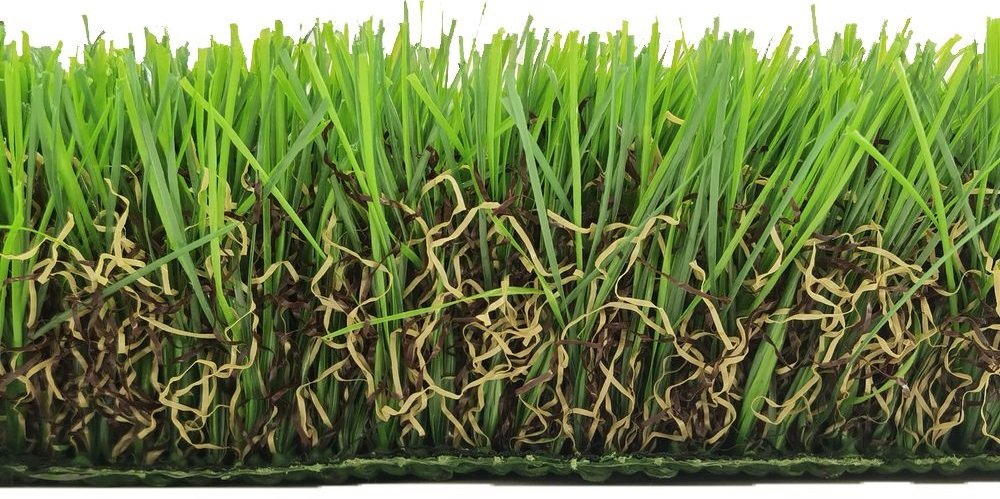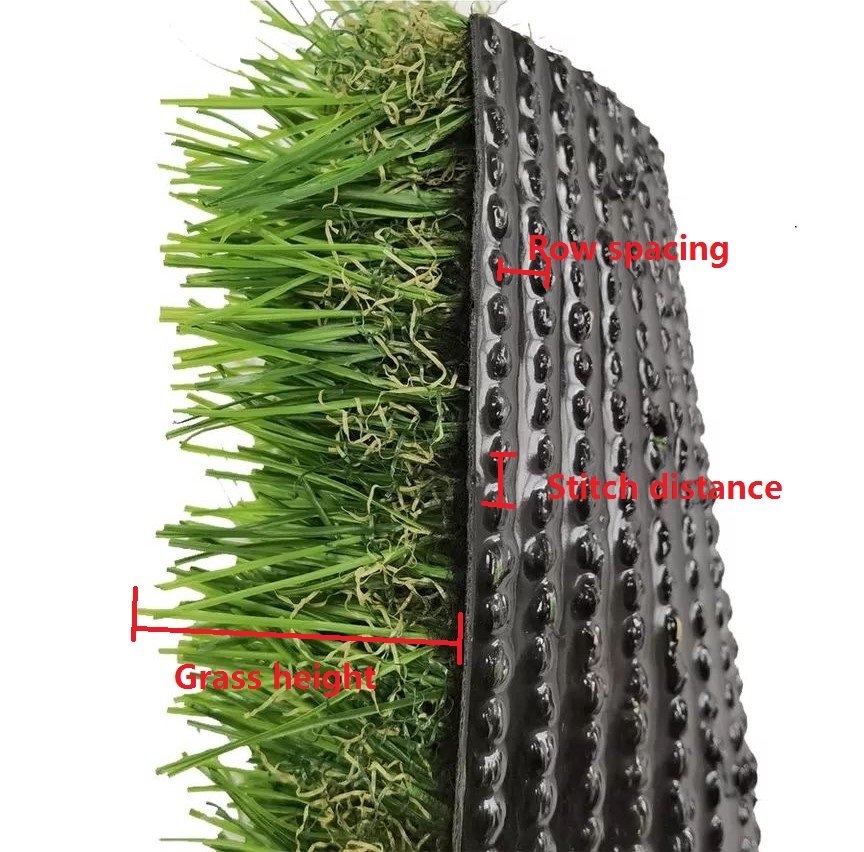Apr 20th,2023

Lawn is usually composed of grass filaments and bottom backing, today we will talk about the parameters of grass filaments for landscape grass.
The usual parameters of grass wire are grass color, straight wire, curved wire, row spacing, needle spacing, cluster density, grass height, grass slenderness, grass type, material.
Grass color: The color of grass wire is generally customizable, and landscape grass is generally four colors.
Row spacing: It is the spacing between rows of grass wire, it is the distance between needles of a machine, and it cannot be changed. Generally, the smaller the distance, the more dense the lawn will be.
Common row spacing is: 3/8 inch, 5/8 inch, 3/4 inch, 3/16 inch.
3. Stitch distance: also known as step distance, is the distance between each stitch of the lawn in the direction of the walking stitch.
We generally measure how many clusters of grass (bumps) there are in 10cm or 20cm.
Note as: 15 stitches/10cm, 22.5 stitches/10cm.
4. Cluster density: It refers to the density of grass filaments in one square meter, that is, how many clusters of grass filaments in 1 square meter, it directly reflects the denseness of the grass filaments of this lawn, the larger the value, the denser the lawn.
The calculation is: the number of rows in 1 meter length * the number of needles in 1 meter length.
For example, 3/8'', 15 stitches/10cm;
Calculation: (100cm/0.952cm) * (15 stitches * 10) = 15756.3tufts/㎡
Take the smallest integer, recorded as: 15750 stitches/㎡or 15750tufts/㎡
5. Grass height: It means the distance from the top of the base cloth to the top of the grass wire, which is the height of the grass wire. Some manufacturers count the small bumps under the base cloth as part of the grass height.
Note: 35mm, 40mm.
When you measure it yourself, you should find the longest grass wire.
6. Slenderness: grass fiber slenderness. It directly reflects the size and weight of the grass fiber, which directly affects the abrasion resistance of the grass fiber and the usage time. Generally speaking, the greater the slenderness, the more durable the grass yarn.
It has several units, the common one is Dtex, which refers to the gram weight of 10,000 meters of grass yarn. Be careful when you measure it yourself to consider all the grasses in a cluster as a whole.
For example, if the grass is 30mm high, the length of one tuft may be 65mm, and we pick out 10 tufts to weigh, assuming the weight is 0.13g,
then its fibre is 10000/(0.065*10)*0.13=2000dtex.
When looking at the parameters, the freeness is an easy parameter to ignore, it can do thousands to tens of thousands, but it is hard to see the difference in the picture.
7. Grass shape, refers to the shape of the cross-section of grass wire.
It is the grass wire in the production of different die head, used to deal with different use environment.
The common ones are: C type, M type, C plus reinforcement type.
8. Grass wire raw materials, generally PP + PE, and then add some additives.
Usually are mixed, some manufacturers with a long shelf life will add UV protection, insect-proof additives, is impossible to distinguish themselves.
This article is just a brief introduction to give us a reference when we are selecting a lawn and to prevent businesses from using the parameters to deceive us.
We always believe that you get what you pay for and let the customer know about the lawn so that they will be more recognized for the quality of our products.
